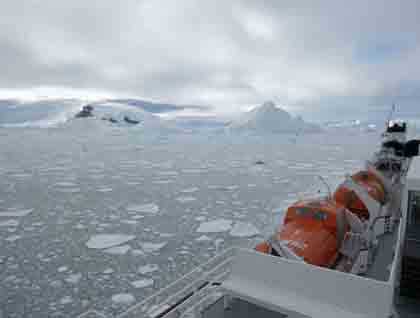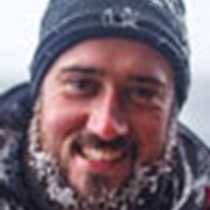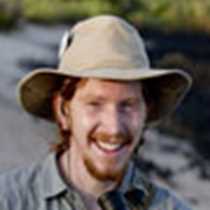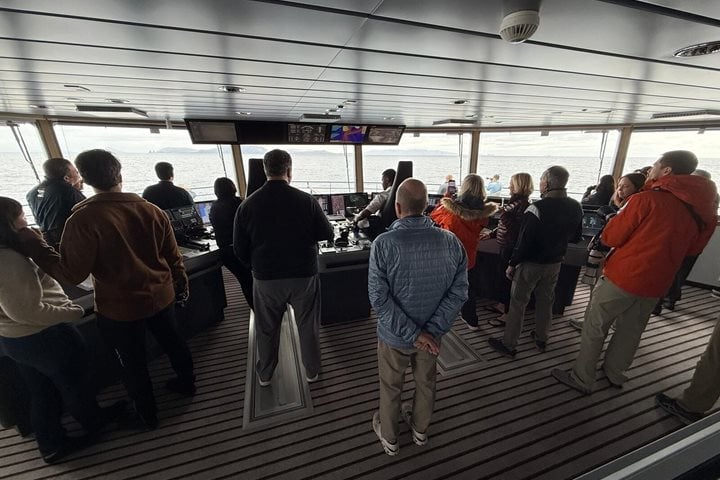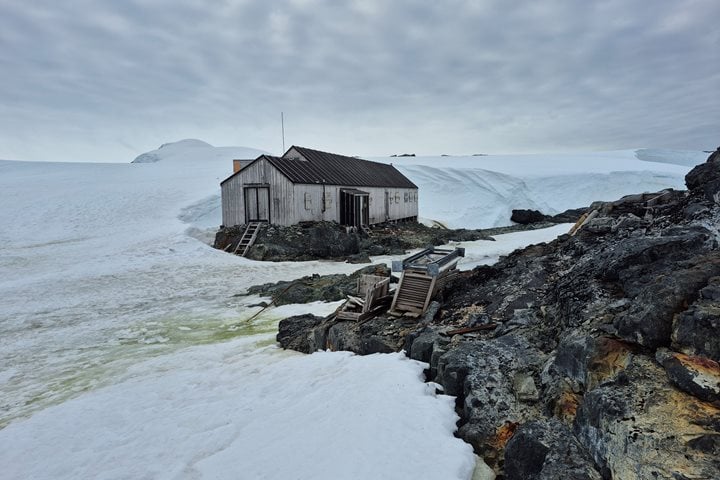We woke to diffuse morning light flooding the brash ice and glaciers of Lindblad Cove. This inlet in Charcot Bay provides us with some of the most striking views of ice that can be seen on the Antarctic Peninsula. Several hours were spent here taking in the radiant white spectacle that surrounded us before we finished breakfast and headed onwards towards our next destination. Humpback whales and minke whales were present throughout our transit, much as they had been amongst the ice also. As we travelled along the majestic Antarctic coastline, we listened to talks by some of our expedition team. Jason Kelley, one of our naturalists, gave a talk on ice, appropriately. This helped us to appreciate our surroundings in a way that went beyond the aesthetic. After this, we listened to Global Perspectives Guest Speaker, Peter Hillary, recount stories of some of his own adventures in some of the more hostile regions of Antarctica. By the time this ended, we had arrived in Mikkelsen Harbour.
Mikkelsen Harbour is a small, sheltered inlet on Trinity Island. Here we dropped Zodiacs to land on D’Hainaut Island. This island, despite its small size, holds a wealth of human and natural history. Gentoo penguins are well established breeders here, and its shoreline is popular with fur seals and weddell seals at this time of the season. The island has an old Argentinian rescue hut, as well as a significant scatter of whaling remains on the island’s northeast shore. This includes the hulks of two watercraft, as well as a large number of whale bones. These are a testament to the sheer scale of human impact on the Antarctic in the early 20th Century.
As the evening drew in, we returned to the ship and those who were brave enough took to the water for a polar plunge before dinner. This life-affirming immersion served as a fitting end to a day that truly showed us the most beautiful side of the white continent.

